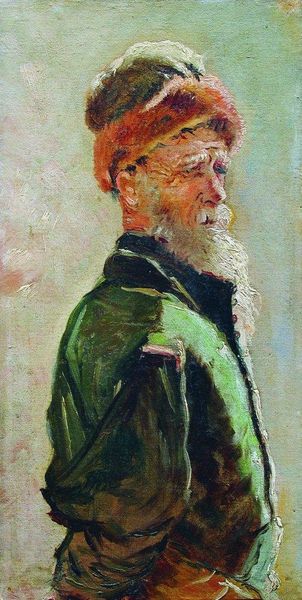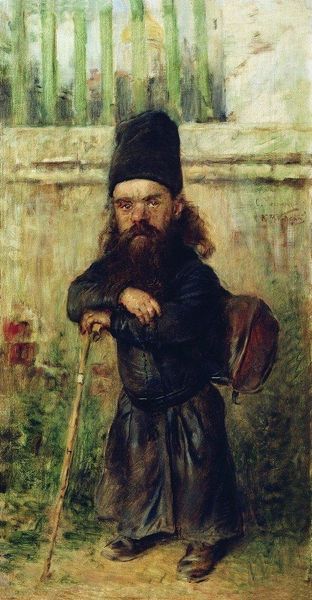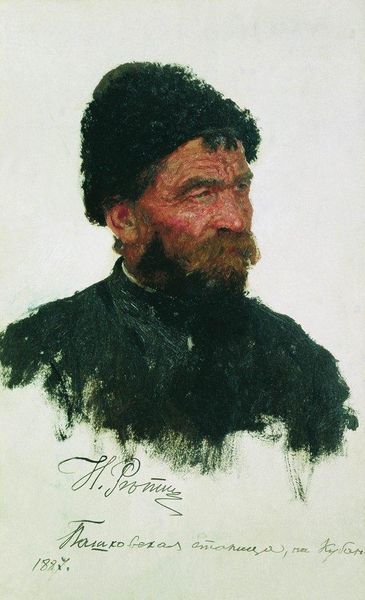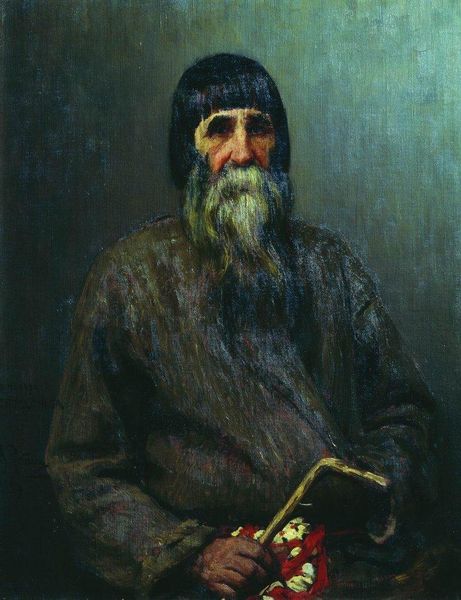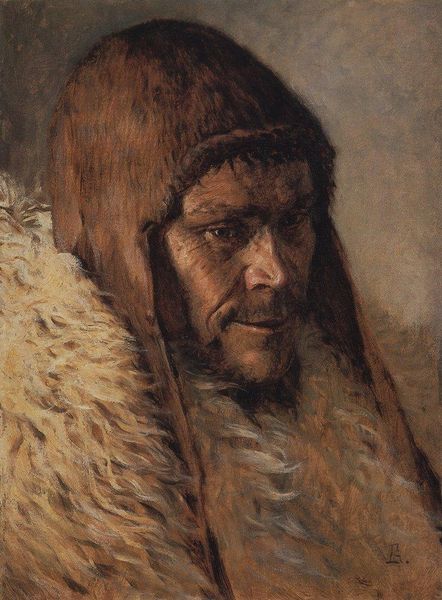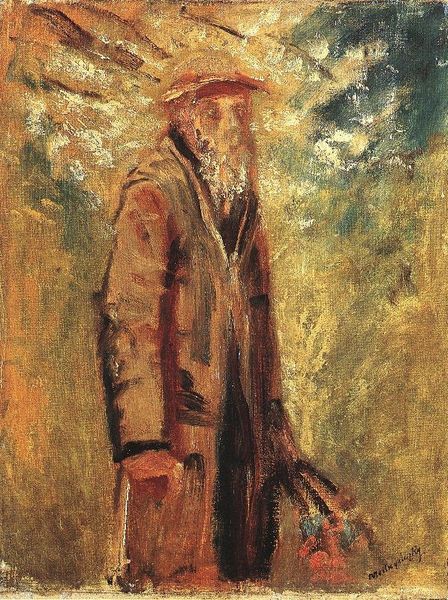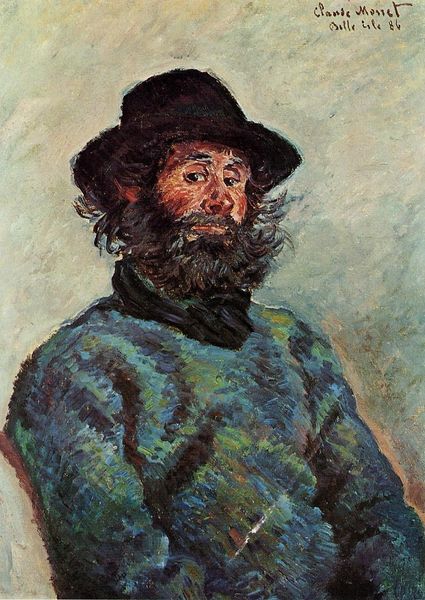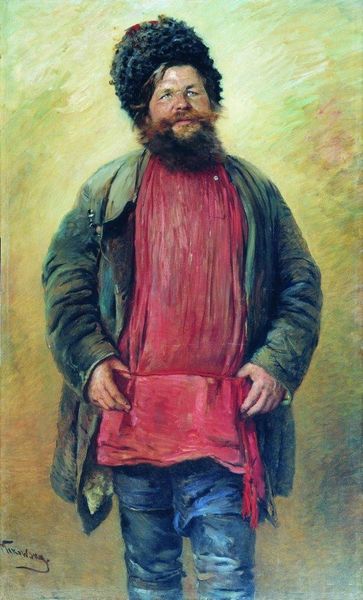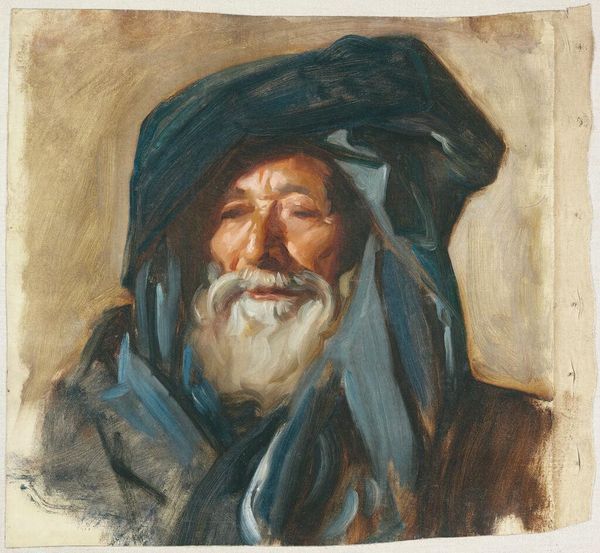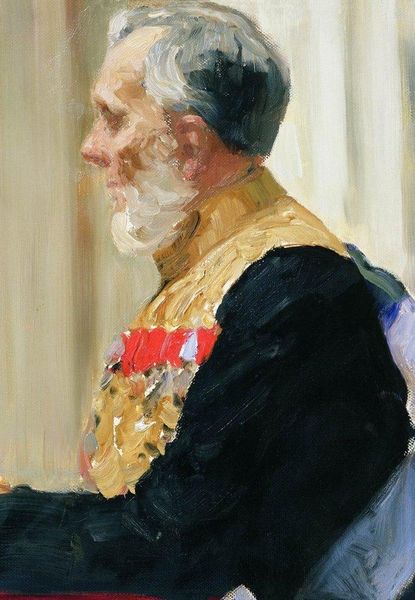
Copyright: Public domain
Curator: We are looking at "Coachman," painted around 1900 by Konstantin Makovsky. Editor: It’s a striking portrait. The texture is so rich – I immediately get a sense of weathered dignity, or perhaps resignation? The impasto seems almost sculpted in places. Curator: Indeed. Note the bravura brushwork, particularly in the rendering of the fur hat. See how Makovsky uses these dense, energetic strokes of oil paint to define form and capture light. It is less about perfect anatomical representation and more about an expressionistic conveying of the subject's essential character. Editor: I'm interested in the choice of subject. Coachmen were essential figures in society, facilitating movement and commerce, yet were rarely given prominence in portraiture outside of perhaps a genre scene. Is Makovsky, through this focus, subtly elevating the status of the working class? His rosy cheeks may even connote comfort and excess. Curator: It's an intriguing thought. However, his artistic trajectory also embraced Orientalism. The details in the composition draw attention to specific characteristics like facial structure and the arrangement of his attire, effectively creating symbolic, representative visual contrasts. It could be interpreted as his attention to the play of textures and colors is also important here: the soft fur against the coarse beard, the subtle variations in the earthy palette. Editor: Yes, it feels both celebratory and detached at the same time. And consider the period: the rise of industrialization, and accompanying shifts in societal structure. Perhaps this is Makovsky’s nostalgic look backward? He gives weight to what was disappearing from view. It’s an era, an archetype on display. Curator: I find the formal relationships in this artwork incredibly powerful. It exemplifies late Romanticism through a distinctive exploration of surface and affect. The interplay of shadow and light adds depth, a visual counterpoint underscoring what becomes visible from different perspectives. Editor: For me, seeing that tension in technique, subject matter, and composition—illuminates complex sociopolitical currents flowing beneath the surface. It asks us to consider our relationships, as audiences, to representations of labor, status, and personhood. Curator: Yes, the surface, ultimately, becomes a compelling point of entry into thinking about historical transformation through visual form. Editor: Absolutely; its material eloquence echoes beyond the frame.
Comments
No comments
Be the first to comment and join the conversation on the ultimate creative platform.
